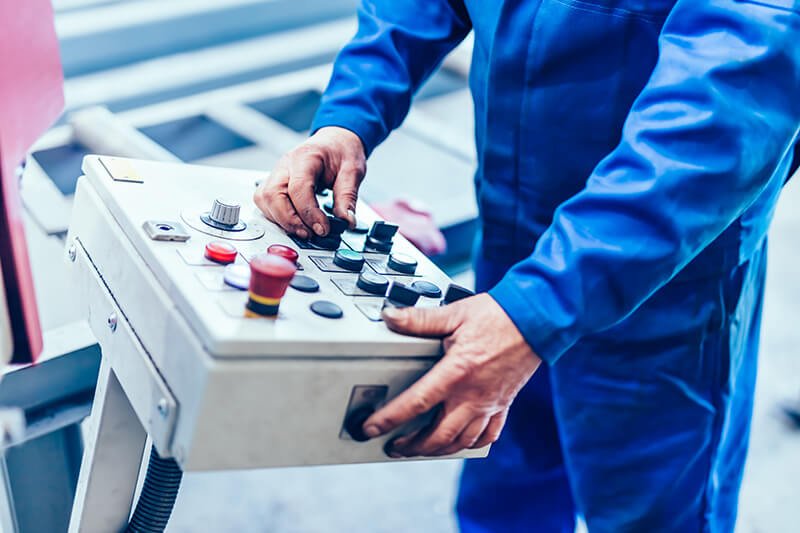Growing automation practice has become an integral and inseparable part of the Industries in 2020. It carries a set of advantages which has increased the significance of automation. Before knowing more about automation, let us understand what PLC and SCADA are.

What is PLC:
PLC is the acronym for Programmable logic control. It is the key component which regulates and controls all the units of the manufacturing industry. PLC is basically a computer-controlled device where a close look is maintained at the output devices, to make important decisions based on customised program, keeping on account on different input devices.
PLC consists of a microprocessor which has a computer program written on it. A cable is used to transfer this program to this device. The program is generally stored in non-volatile memory of PLC.
A convenient user language called ladder programming is created so that it can be comprehended by the user easily.
A PLC consists of
- Input/output section- It comprises of a sensor in the input and solenoid motor at the output.
- Central processing unit- CPU is the nerve of PLC. It drives the output of a specific operation.
- Programmable device- It consists of the logic in the form of a programming code.
- Memory- It stores the logic.
- Power supply- It provides the power supply to the unit.
PLC has four working modes:
- Input scan
- Program scan
- Output scan
- Housekeeping
The 4 most popular programing language used in PLC’s are
- Sequential function charts (SFC)
- Ladder diagram(LD)
- Function block diagram (FBG)
- Instruction list (IL)
Advantages of using PLC:
- It has fast working principles, and it consumes less power.
- The maintenance is easy.
- The logic is programmable, and you can change it easily.
- Good diagnostic and fault finding capability.
- It can handle complex logic operations.
- It has got easy interface, good analogue handling.
- You can program the counter, timer and comparator also.
What is SCADA?
SCADA is the acronym for supervisory control and Data Acquisition.
After PLC, it is the most prominent automation device. It is responsible for looking at all the industrial procedures from the centre. The attractive things about SCADA is, it can process real-time data. It can interact with all the other devices through a software called Human-Machine interface.
A manufacturing system yield different Data through different procedures. The function of SCADA is to merge all the interlining Data. It methodically organises the curated data for further statistical evaluation of the respective business. SCADA works in conjunction with PLC.
SCADA consists of:
- PLCs- programmable logic controllers interconnected but more logical and versatile.
- Remote terminal unit (RTU)-They connect sensors to actuators.
- Communication infrastructure: They connect the supervisory systems to PLc’s and RTU’s.
- Supervisory computers: It includes the HMI software and basically communicates the field connectors.
SCADA derives its function mostly from C programming language.
Advantages of SCADA:
- They consume less time
- They consume less human resource
- They help in increasing production revenue.
- Secure and good remote accessibility.
- Organised data management and better Data system
- They make use of good data interface.
Importance of PLC and SCADA is Industrial automation:
With a rough idea of how manufacturing industries function, the fact is inevitable that the manufacturing sector and Industries lay the backbone and concrete structure of any country’s economy.
In order to take forward, or we can what consists of these manufacturing units are nothing but few automation components.

PLC and SCADA are the two functional units of a manufacturing system. In this technology-led era, yielding product through human resources has become too mainstream. The modern aspects like technological advancement has given a new edge to the industry in the form of PLC and SCADA.
PLC consistently processes various input performances and optimise them to streamline the manufacturing process. The growing demand for this kind of technologies has increased the production and yield for a particular period of time. Human runs fast, and technology run faster. If we compare, the time taken to yield production by both human and machines will be different. Indeed technology will take less time. The upgrowing technology is directly proportional to the no of the job opportunity.

PLC and SCADA training programs have elevated in large scale, helping students to make a strong workforce acquiring these skills.
It is essential to learn these skills and get into the niche of technological demands which can give you a good job and career in the same time.


